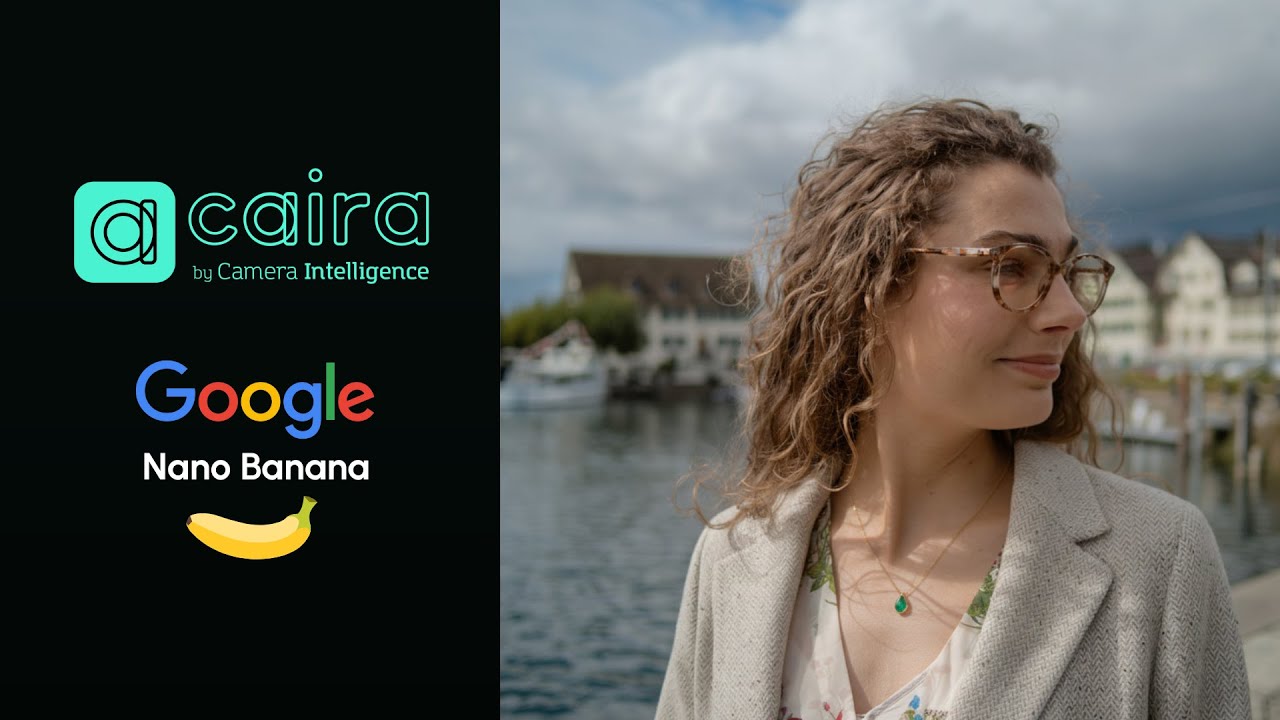- Camera Intelligence’s new Caira device uses Google’s new Nano Banana AI image model to manipulate your photos.
- Caira uses an iPhone Magsafe mount and interchangeable lenses to take the initial photo on your smartphone.
- Users can change the lighting, colors, or any object or aspect of the photo right away without engaging with Gemini Assistant or other tools.
A new device makes Google’s new Gemini 2.5 Flash Image model, better known as Nano Banana, into a camera or at least part of a smartphone camera. Camera Intelligence has introduced the Caira, a mirrorless camera that attaches to iPhones via Magsafe and has nano banana built right into the device.
The combination allows you to take a photo and immediately play with Nano Banana, whether changing the lighting, color or turning wine into water, as seen above. It theoretically makes use of Nano Banana, best known for making viral 3D figurines from photographs, as frictionless to use as an Instagram filter. Since it’s fully integrated with iOS through MAGSAFE, you can review, edit and export directly from your phone.
Camera intelligence launches the Caira as a way to blend taking a photo and post-processing it at the same time. And speed can be a big issue, especially if content production is part of your job.
The CAIRA supports interchangeable micro-four-thirds lenses, making it the first mirrorless camera to offer this type of pro-optical pipeline to AI. There are also add-ons like an optional battery grip to extend shooting times and a sensor package 400% larger than a typical smartphone camera, giving the Caira a solid advantage in optical quality even before the AI comes up.
Nano Banana Camera

To watch
There are many AI image models out there, but Camera Intelligence went with Nano Banana for its reliability and to ensure photos maintain their quality after editing. This makes it especially powerful for commercial creators who need fast, clean, client-ready output without spending hours in Lightroom.
“By integrating Nano Banana directly into Caira, we collapse traditional content creation workflows; we aim to fundamentally change the way creators capture, edit and share our world,” explained Vishal Kumar, CEO of Camera Intelligence, in a statement. “We chose Google’s Nano Banana because it’s the best model we’ve seen for maintaining consistent character details and blending new edits seamlessly while preserving the optical quality of the original image.

Of course, all this power comes with responsibility. Camera Intelligence says it is committed to what it calls an “ethics-first” development strategy, and Caira will include built-in guardrails. Users cannot edit skin tone, ethnicity, or basic facial features, and edits that inappropriately manipulate personal identity will be blocked at the quick level.
The system is designed to comply with Google’s own Generative AI Use Policy, and the company says it works with professional photographers and ethics researchers to establish best practices for responsible creative editing.
This balance will be closely monitored. Generative editing at the point of capture is a powerful capability, and while Camera Intelligence says it limits identity-blocking features, it’s easy to imagine edge cases emerging as users test the limits of what the AI can do with lighting, body shapes, or context switches.
Still, having the Caira instead of DSLR shooting and editing on a MacBook is obviously appealing when you’re on the go or on the road. But as good as AI can be as an editor and toy for silly photos, it’s just a tool, not a replacement for real photographic artistry. Thinking otherwise would be bananas, nano or any other size.
Follow Techradar on Google News And Add us as your favorite source To get our news, reviews and expert opinions in your feeds. Make sure to click the Follow button!
And of course you can too Follow Techradar on tiktok For news, reviews, unboxings in video form and get regular updates from us on Whatsapp Also.




